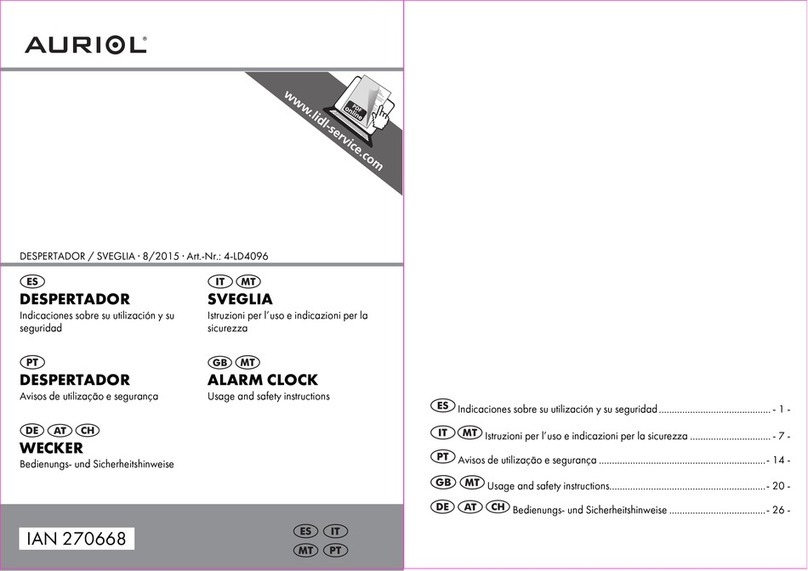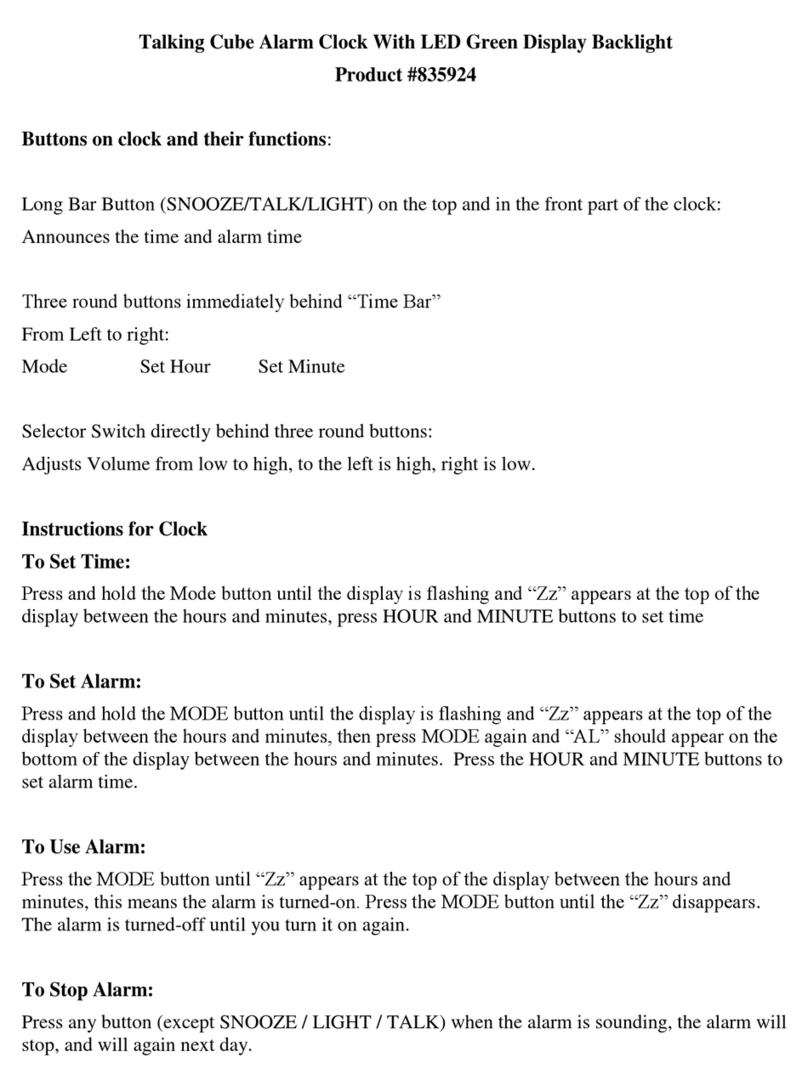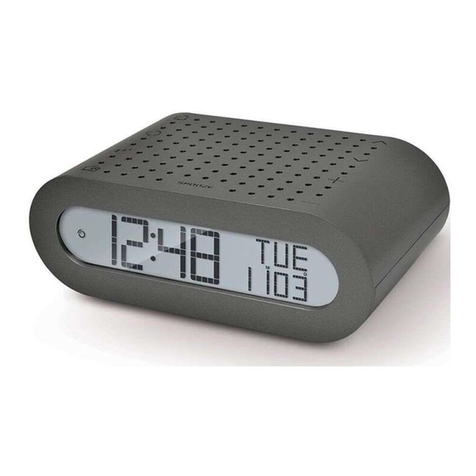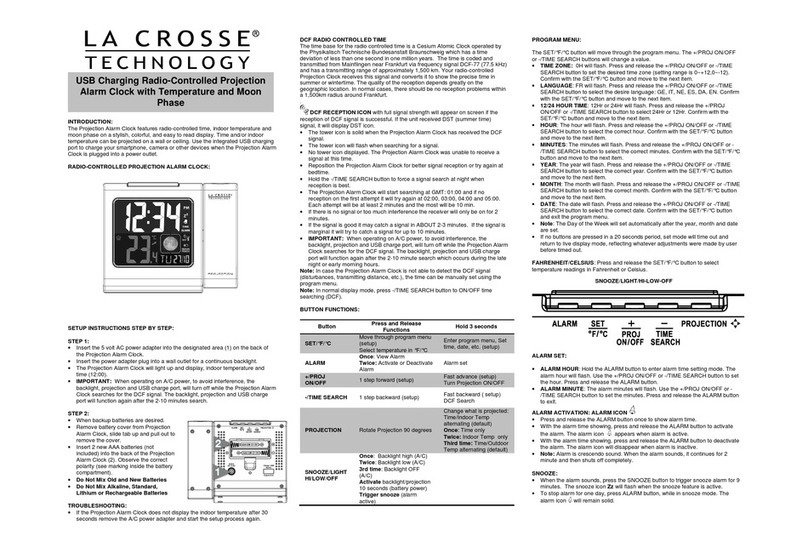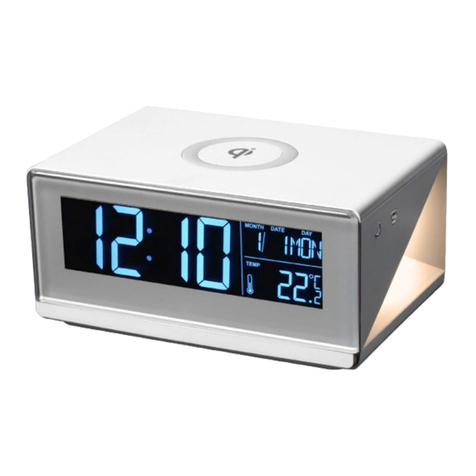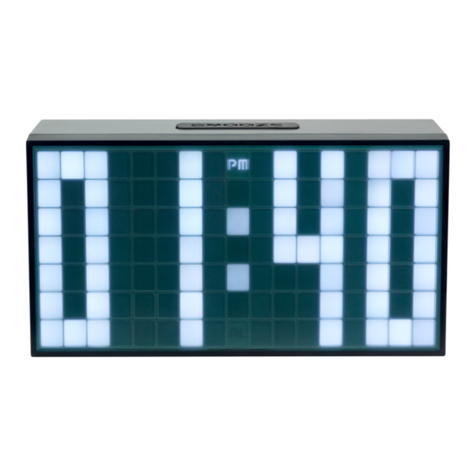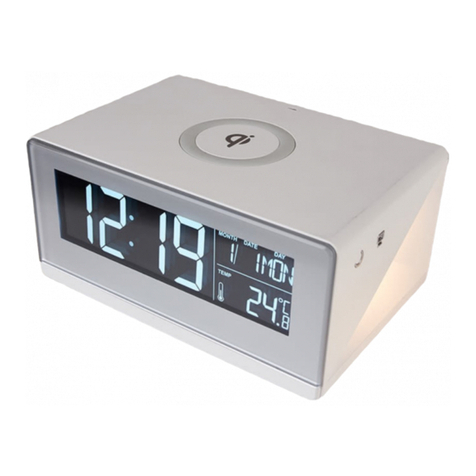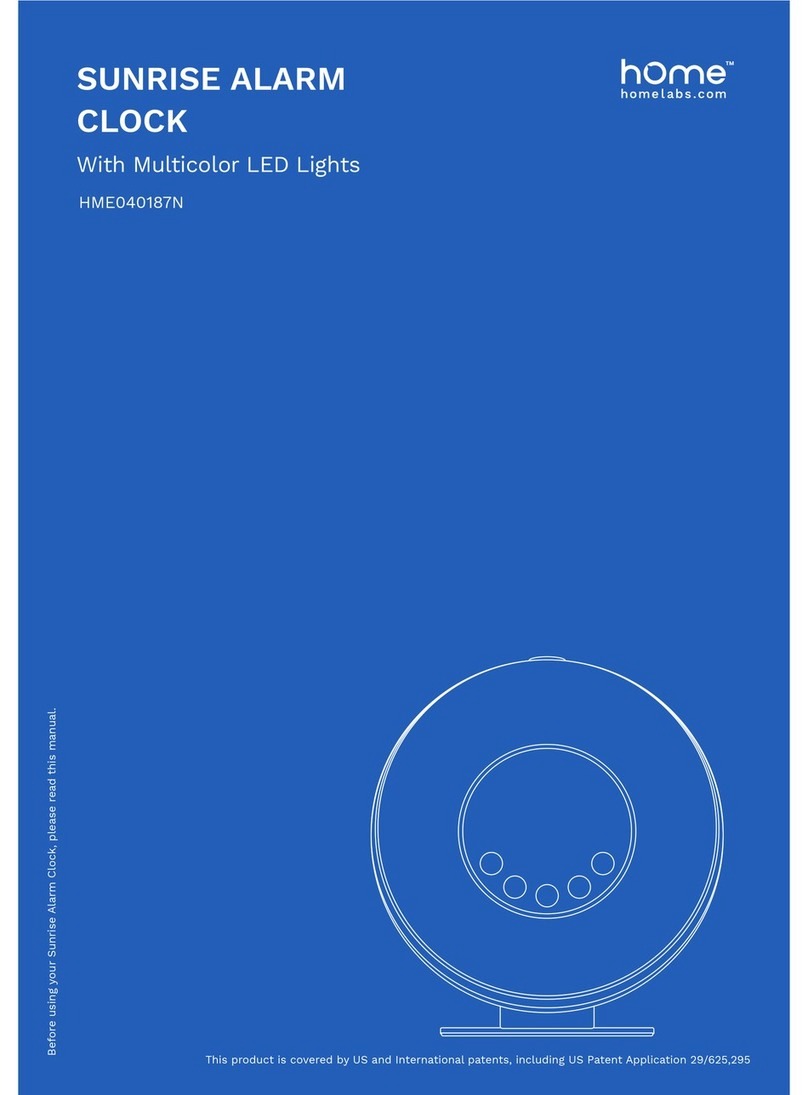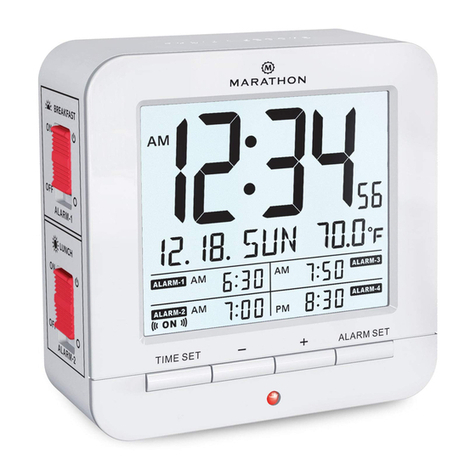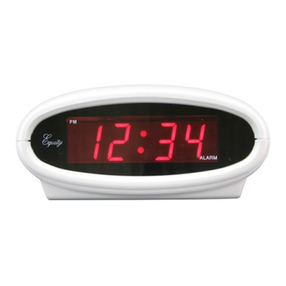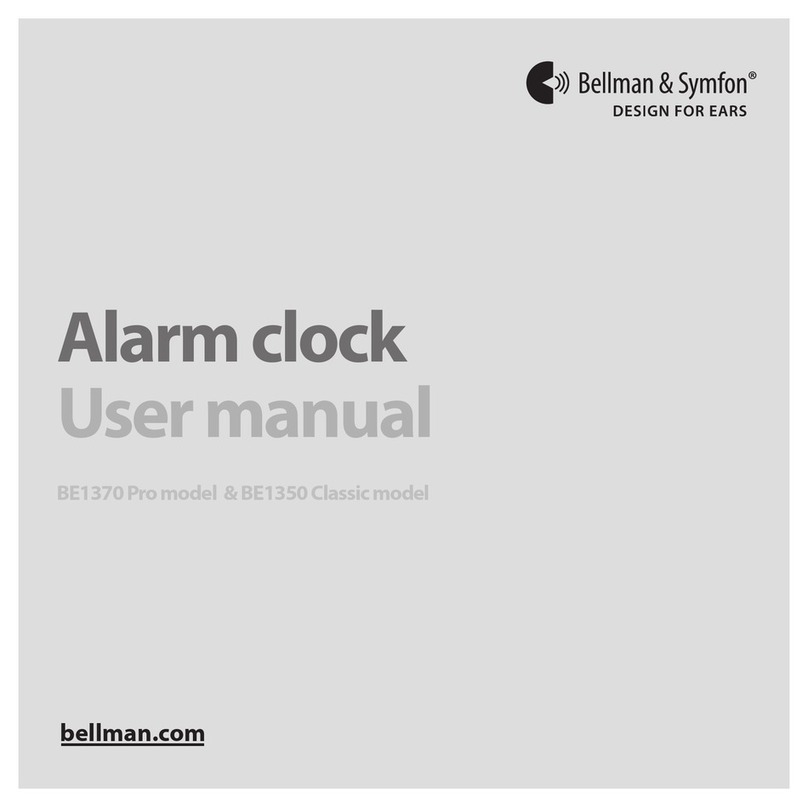
by using “UP” or “ DOWN” to set the desired values and press “MODE” to jump to the next parameter.
The Snooze interval can be adjusted from 5 to 60 minutes. Press “ MODE” once again to exit setting mode.
Press “DOWN” to activate the alarm. TheALicon will light up.
6. When the alarm beeps:
Press “MODE” to activate the snooze function. The AL icon will flash. Or press “ DOWN” to turn off the
alarm. The AL icon will turn off.
7. Night Mode
The clock will be automatically dim during the night mode. Press “ MODE” twice times to adjust the night
mode settings. Press “UP” or “ DOWN” to turn ON/OFF the night mode. The default night mode time is
from 18:00 to 6:00, if you want to change this values, Press twice times “ MODE” to enter the night mode
settings, turn the setting to “ON”, hold “ MODE” for 3 seconds, use “ UP” or “DOWN” to adjust the
dimming starting time ( the top center dot of the display will light up). Press “MODE” to adjust the
dimming ending time ( the bottom center dot of the display will light up). Press “ MODE” once again to exit
setting mode.
8. Brightness Setting
There are 3 levels of brightness. The default brightness is medium. Under time mode, press “UP” to choose
the brightness level.
FCC Statement
This equipment has been tested and found to comply with the limits for a Class B digital device, pursuant to part
15 of the FCC rules. These limits are designed to provide reasonable protection against harmful interference in a
residential installation. This equipment generates, uses and can radiate radio frequency energy and, if not installed
and used in accordance with the instructions, may cause harmful interference to radio communications. However,
there is no guarantee that interference will not occur in a particular installation. If this equipment does cause
harmful interference to radio or television reception, which can be determined by turning the equipment off and on,
the user is encouraged to try to correct the interference by one or more of the following measures:
-Reorient or relocate the receiving antenna. -Increase the separation between the equipment and receiver.
-Connect the equipment into an outlet on a circuit different from that to which the receiver is connected.
-Consult the dealer or an experienced radio/TV technician for help. To assure continued compliance, any
changes or modifications not expressly approved by the party. Responsible for compliance could void the user’s
authority to operate this equipment. (Example- use only shielded interface cables when connecting to computer or
peripheral devices).
This equipment complies with Part 15 of the FCC Rules. Operation is subject to the following two conditions:
(1) This device may not cause harmful interference, and
(2) This device must accept any interference received, including interference that may cause undesired
operation.

